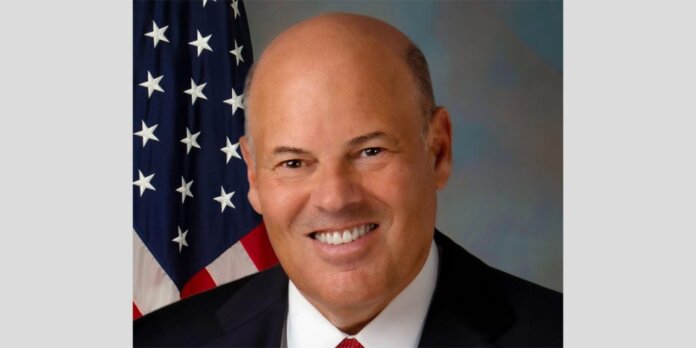The U.S. Postal Service says it remains committed to working with all its stakeholders – including Congress and the Environmental Protection Agency (EPA) – as it pursues the fiscally responsible implementation of its Next Generation Delivery Vehicle (NGDV) program, which is designed to introduce safer and more environmentally friendly vehicles and works towards the electrification of its delivery fleet as quickly as resources and infrastructure will allow.
“Our commitment to an electric fleet remains ambitious given the pressing vehicle and safety needs of our aging fleet as well as our dire financial condition,” says Postmaster General and USPS CEO Louis DeJoy. “The proposed action, which we are evaluating under the National Environmental Policy Act (NEPA), includes an initial order plan for 5,000 electric vehicles, and the flexibility to increase the number of electric vehicles introduced should additional funding become available. Absent such funding, we must make fiscally responsible decisions that result in the needed introduction of safer and environmentally cleaner vehicles for the men and women who deliver America’s mail.”
In the spirit of collaboration and dedication to modernizing its fleet, the Postal Service has made its top engineering, logistics and labor staff available to key federal agencies as part of the process of better determining what is needed from an environmental standpoint for its NGDV.
In preparing its Environmental Impact Statement (EIS) under NEPA, the Postal Service also consulted with several federal agencies and continues to consult with them as it moves to complete the NEPA process. The NEPA law ensures federal agencies carefully consider environmental impacts and reasonable alternatives to a proposed course of action, and the Postal Service believes it has fully satisfied the requirements of the statute.
Over the past year, the Postal Service has made its teams available to policymakers in Congress, as they pursued efforts to secure funding to achieve a majority electric USPS delivery vehicle fleet over the next 10 years. Although congressional funding levels have varied, the Postal Service most recently discussed an ability to achieve 70% fleet electrification within a decade.
“When you’re an independent government entity running billion-dollar annual losses, and with a Congressional mandate to operate in a financially sustainable manner, we are compelled to act prudently in the interests of the American public. However, that responsibility should not be mistaken for an ambivalent commitment to operating a cleaner Postal vehicle fleet for our country,” said Postmaster General DeJoy. “Moreover, comparisons of the Postal Service to private sector multi-national corporations that report yearly profits in the billions of dollars, and that are not required to go to 161 million delivery addresses in all climates and topographies six days per-week, are not relevant in view of our perilous financial condition and universal service mission.
“We will be resolute in making decisions that are grounded in our financial situation and what we can realistically achieve, while pushing hard to take delivery of safer, cleaner vehicles by next year,” DeJoy adds. “Given our large fiscal deficits and significant financial challenges, Congress is well aware of the additional resources that would be required if Congress would prefer the Postal Service to accelerate the electrification of our delivery vehicle fleet as a matter of public policy.”
The NGDV with an internal combustion engine would be a more fuel-efficient vehicle as compared to the current Long Life Vehicle (LLV), despite being larger. The NGDV’s fuel economy without air conditioning running is 14.7 MPG, compared with the LLV’s fuel economy of 8.4 MPG (which does not have air conditioning). The new vehicle would provide the Postal Service carriers with numerous modern safety features including 360-degree cameras, automatic front and rear braking, and a driver air bag.
Recognizing that powertrain technology may change significantly over the available 20-year life of the NGDV, the Postal Service selected a flexible design platform that can accommodate advancements in technology. It provides a vehicle platform that can be delivered with either an internal combustion engine or battery electric drive train technology.
The NGDV power train mix in the proposed action that is being considered under NEPA would have positive environmental impacts as compared with the current LLVs due to fewer required trips and better emission controls. These controls would decrease tailpipe emissions and help improve air quality when compared to the LLVs they are intended to replace.
The Postal Service’s cost estimates include the price of charging infrastructure rather than assuming the availability of public charging, because Postal vehicles must be charged at Postal Service facilities in bulk to accommodate the operational and logistical needs of its carriers. The Postal Service is analyzing state and local electrical grid capacity to determine potential necessary upgrades at the grid-level.






We purchased and deployed several hundred plug-in EV delivery vehicles prior to my retirement at UPS. I was heavily involved in the procurement, infrastructure planning, route planning and post deployment evaluations (still on-going). This is not a simple process. Anyone can deploy a few EVs. Deploying a fleet of 50 or more in a single building is going to be much more complicated and most of the buildings at USPS are going to require electric capacity upgrades, adding significant cost to what is already an expensive alternative. There is a place for EVs in that industry, but it is not… Read more »